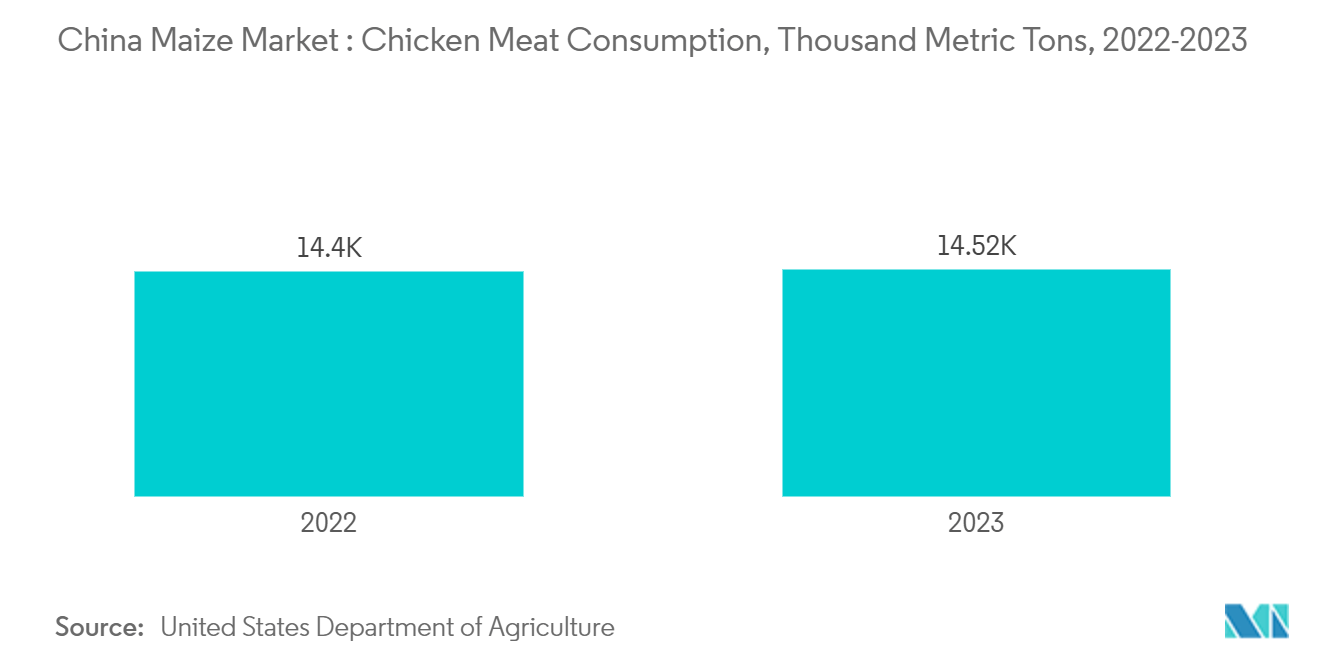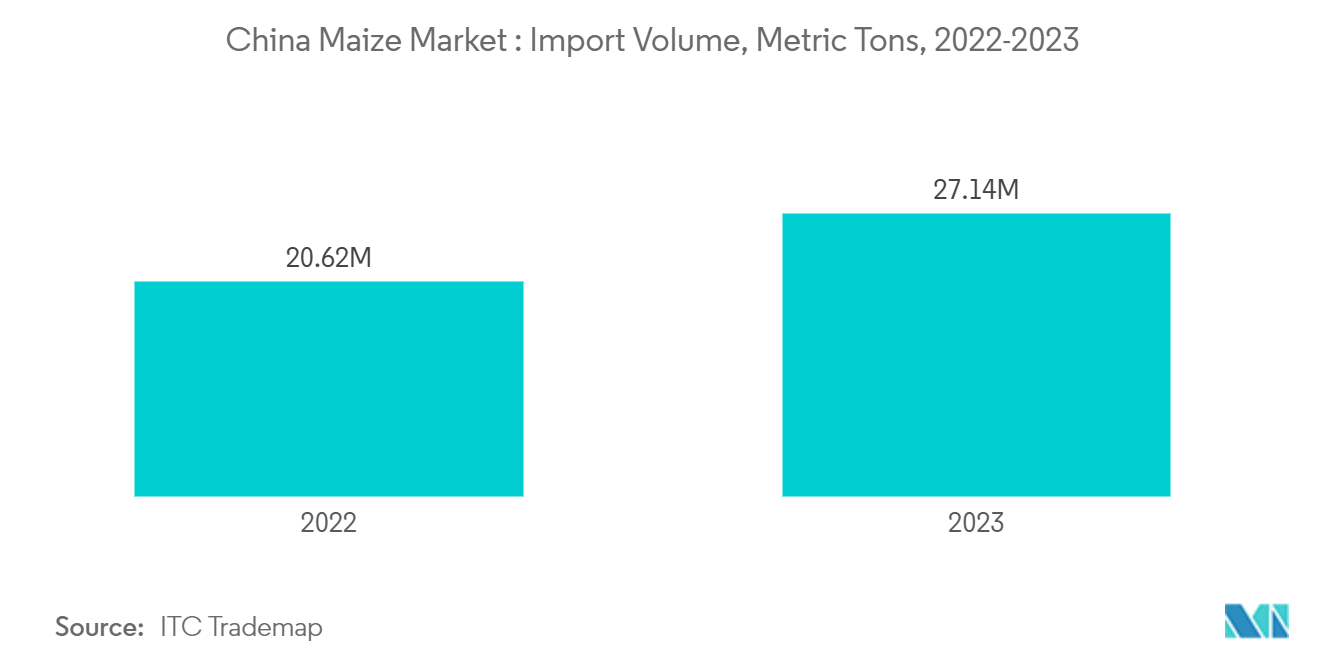Market Trends of China Maize Industry
Increasing Demand from Animal Feed Sector
- Several key factors, all tied to the expanding livestock industry, drive the rising demand for maize in China's animal feed sector. With the growth of China's middle class, there's an escalating appetite for animal protein, especially pork, poultry, and dairy. Urbanization and rising incomes have led to a dietary shift, favoring increased meat and dairy consumption. For instance, the United States Department of Agriculture reported chicken meat consumption in China at 14,401 thousand metric tons in 2022, climbing to 14,515 metric tons in 2023. This heightened demand has spurred a surge in the livestock population, subsequently boosting the need for maize-based feed.
- China's poultry and aquaculture sectors are on the rise. Poultry, being a cost-effective alternative to pork, has witnessed swift expansion. Both sectors heavily depend on maize for their feed formulations. Moreover, China's animal farming is evolving from traditional small-scale operations to expansive industrial farms. These larger entities predominantly use formulated feeds, with maize as a key ingredient. As these industrial farms increasingly supplant smaller ones, a significant uptick in demand for commercial feed and consequently maize is anticipated. Maize, favored for its high carbohydrate content, serves as a vital energy source for animals. In contemporary feeding practices, it's commonly blended with protein sources like soybeans to ensure balanced nutrition. This feed optimization not only enhances growth rates but also boosts meat yields, leading to increased maize consumption.
- With ongoing urbanization and rising incomes, China's appetite for animal protein and by extension, maize for feed is set to expand. This demand is further bolstered by China's meat exports gaining traction in global markets, underscoring the need for premium animal feed. The surging maize demand in China's animal feed sector stems from a confluence of factors: the livestock industry's growth, evolving farming practices, governmental backing, and a burgeoning feed manufacturing sector. As China modernizes and amplifies its meat and dairy output, maize's pivotal role in animal feed will persist, underpinning both domestic production and escalating import requirements.

Increasing Maize Imports in the Country
- China's rising maize imports stem from domestic supply shortages and surging demand, especially from the livestock and industrial sectors. Even as one of the globe's top maize producers, China's domestic production growth has stagnated. Key maize-producing areas like Heilongjiang, Jilin, and Liaoning grapple with challenges such as soil degradation, limited expansion of arable land, and urbanization. Moreover, recent years have seen yields affected by adverse weather events like droughts and floods.
- China has been ramping up ethanol production under its biofuel blending mandate (E10, mandating 10% ethanol in gasoline). Given that maize serves as the primary feedstock for ethanol, this policy has intensified the strain on domestic maize supplies, leading to heightened imports. Furthermore, the maize starch and sweetener sectors are witnessing growth, fueled by increasing demand for processed foods and industrial applications. As maize is pivotal for producing starch and sweeteners like high-fructose corn syrup, consumption in these industries has surged.
- Additionally, China holds strategic grain reserves, including maize, to bolster food and feed security. In recent years, as demand outpaced domestic supply, the government replenished these reserves, driving up import volumes. For context, ITC Trade Map data shows that China's maize imports rose from 20,618,487 metric tons in 2022 to 27,139,976 metric tons in 2023.
- China employs a tariff-rate quota (TRQ) system for maize imports: those within the quota enjoy lower tariffs, while imports exceeding the quota face steeper tariffs. Yet, in recent years, the government has broadened the quota and eased restrictions, permitting a greater influx of foreign maize. This leniency has enabled larger import volumes, aiding in stabilizing domestic markets and regulating prices. Looking forward, as domestic demand continues to surpass production, China's reliance on maize imports is poised to persist, especially as the nation aims to secure food and feed stability in a volatile global landscape.


